
Lake City is the county seat of Columbia County, Florida, United States. As of the 2010 census, the city's population was 12,046. It is the principal city of the Lake City Micropolitan Statistical Area, which is composed of Columbia County, and had a 2010 population of 67,531. Lake City is 60 miles west of Jacksonville.
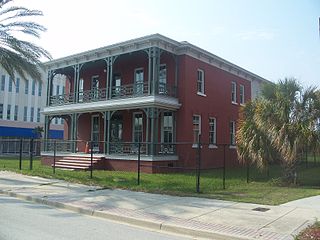
The Brewster Hospital building is a historic U.S. hospital in the LaVilla neighborhood of Jacksonville, Florida. It is located at 915 West Monroe Street. On May 13, 1976, it was added to the U.S. National Register of Historic Places.

The Florida Theatre is a historic American movie theater located in Jacksonville, Florida. Opened in April 1927, it was added to the U.S. National Register of Historic Places on November 4, 1982. On April 18, 2012, the AIA's Florida Chapter placed the building on its list of Florida Architecture: 100 Years. 100 Places.

The Horace Duncan House is a historic site in Lake City, Florida, United States. It is located at 202 West Duval Street. On November 15, 1993, it was added to the U.S. National Register of Historic Places.

The Hotel Blanche is a historic site in Lake City, Florida, United States. It is located at 212 North Marion Street. On January 18, 1990, it was added to the U.S. National Register of Historic Places.
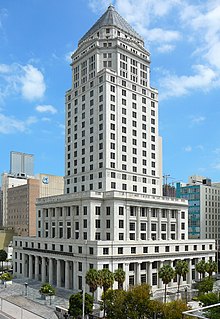
The Miami-Dade County Courthouse, formerly known as the Dade County Courthouse, is a historic courthouse located at 73 West Flagler Street in Miami, Florida. Constructed over four years (1925–28), it was added to the U.S. National Register of Historic Places on January 4, 1989. The building is 361 feet tall with 28 floors. When it was built, it was the tallest building in Miami and in Florida.
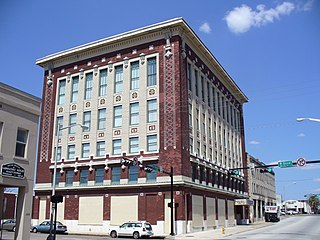
The Masonic Temple is a historic Masonic temple in Jacksonville, Florida. It is located at 410 Broad Street. Constructed by the Grand Lodge between 1901 and 1912, it was added to the U.S. National Register of Historic Places on September 22, 1980.
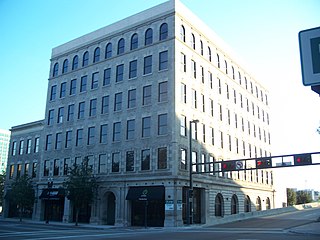
The Dyal–Upchurch Building is a six-story, 43,747-square-foot historic building in Jacksonville, Florida. It is located at 4 East Bay Street, and was designed by architect Henry John Klutho. On April 17, 1980, it was added to the U.S. National Register of Historic Places.

The Schultz Building, formerly the Atlantic National Bank Annex, is a historic building in Jacksonville, Florida, United States. It was built between 1925 and 1926 for the Atlantic National Bank as an annex to the Atlantic National Bank Building, located immediately behind it. It stands at 118 West Adams Street, and was added to the U.S. National Register of Historic Places in 1997 as part of the Downtown Jacksonville Multiple Property Submission.

The St. James Building is an historic building in Downtown Jacksonville, Florida, currently housing Jacksonville City Hall. It was designed by architect Henry John Klutho and opened in 1912. One of many structures in downtown Jacksonville designed by Klutho after the Great Fire of 1901, it is considered his Prairie School masterpiece.

The Morocco Temple is a historic Shriners International building in Jacksonville, Florida. It is located at 219 Newnan Street, and was designed by New York City architect Henry John Klutho. On November 29, 1979, it was added to the U.S. National Register of Historic Places. The building is the oldest Shrine temple in Florida.

The Ribault Club is an historic building on Fort George Island near Jacksonville, Florida. It is now home to the Fort George Island Visitor Center. The building was designed in a Colonial Revival architecture style and is credited to Maurice Fatio and Mellen Clark Greeley. It was added to the U.S. National Register of Historic Places on May 11, 2000 and is located on Fort George Road. It was built in 1928 for winter recreation and is considered a legacy of Fort George Island's resort era. Winter recreational opportunities included golf, tennis, hunting, fishing, and yachting. The building is listed as a Historic Landmark by the City of Jacksonville. It became part of the Fort George Island Cultural State Park in 1989.

The Groover-Stewart Drug Company Building is a historic site in Jacksonville, Florida. It is located at 25 North Market Street. On December 30, 1992, it was added to the U.S. National Register of Historic Places.

The Old Lake Worth City Hall, also known as the Lake Worth City Hall Annex, is a historic site in Lake Worth, Florida. It is located at 414 Lake Avenue.
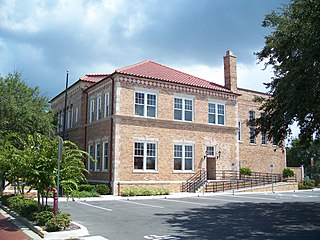
The Lake Wales City Hall is a historic site in Lake Wales, Florida. It is located at 152 East Central Avenue. On August 31, 1990, it was added to the U.S. National Register of Historic Places.
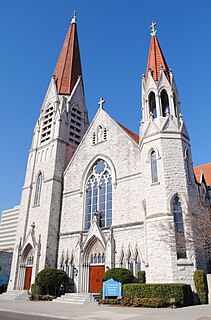
The Basilica of the Immaculate Conception is a historic Catholic church in Downtown Jacksonville, Florida, U.S. A parish church in the Diocese of St. Augustine, it represents Jacksonville's oldest Catholic congregation. The current building, dating to 1910, was added to the U.S. National Register of Historic Places in 1992 as the Church of the Immaculate Conception, and was named a minor basilica in 2013. It is located at 121 East Duval Street; its current pastor is Very Reverend Blair Gaynes.

Theatre Jacksonville is a community theatre based in Jacksonville, Florida, United States. One of the oldest continually producing community theatres in the United States, its building, also known as the Little Theatre, was added to the National Register of Historical Places in 1991.

The Jacksonville Fire Museum is part of the Jacksonville Fire and Rescue Department's Fire Prevention Division. The museum is home to artifacts detailing the history of the fire service not only in Jacksonville, but the entire state of Florida. Exhibits include photos from and a diorama of the Great Fire of 1901, a fully restored 1902 LaFrance horse-drawn fire engine, and a 1926 American LaFrance fire engine.

Wilbur B. Talley was an architect in Florida. He worked in Jacksonville until the death of his wife Nellie and daughter Sarah, who were riding in a car hit by a train on December 21, 1919. After the accident, he moved to Lakeland, Florida where he continued working as an architect.
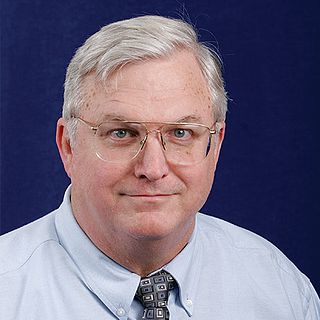
George Robert "Bob" Dekle Sr. is an American lawyer who was an Assistant State Attorney in Florida's Third Judicial Circuit from 1975 through 2005. During this time, he served as lead prosecuting attorney in the 1980 Orlando murder trial of serial killer Ted Bundy, which ultimately delivered the death penalty that was carried out in 1989. Dekle's book on the case, The Last Murder: The Investigation, Prosecution, and Execution of Ted Bundy, was published in 2011.






















